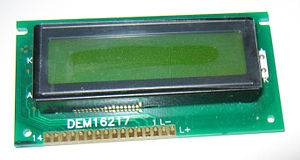





Published on Mar 01, 2025
WT12 is a next-generation, class 2, Bluetooth® 2.0+EDR (Enhanced Data Rates) module. It introduces three times faster data rates compared to existing Bluetooth® 1.2 modules even with lower power consumption! WT12 is a highly integrated and sophisticated Bluetooth® module, containing all the necessary elements from Bluetooth® radio to antenna and a fully implemented protocol stack. Therefore WT12 provides an ideal solution for developers who want to integrate Bluetooth® wireless technology into their design with limited knowledge of Bluetooth® and RF technologies.
By default WT12 module is equipped with powerful and easy-to-use iWRAP firmware. iWRAP enables users to access Bluetooth® functionality with simple ASCII commands delivered to the module over serial interface - it's just like a Bluetooth® modem.
• Fully Qualified Bluetooth system v2.0 + EDR, CE and FCC
• Integrated chip antenna
• Industrial temperature range from -40 o C to +85 o C
• Enhanced Data Rate (EDR) compliant with v2.0.E.2 of specification for both 2Mbps and 3Mbps modulation modes
• RoHS Compliant
• Full Speed Bluetooth Operation with Full Piconet
• Scatternet Support
• USB version 2.0 compatible
• UART with bypass mode
• Support for 802.11 Coexistence
• 8Mbits of Flash Memory

LCDs have become very popular over recent years for information display in many 'smart' appliances. They are usually controlled by microcontrollers. They make complicated equipment easier to operate.
LCDs come in many shapes and sizes but the most common is the 16 character x 2 line display. It requiresonly 11 connections - eight bits for data (which can be reduced to four if necessary) and three control lines. It runs off a 5V DC supply and only needs about 1mA of current. The display contrast can be varied by changing the voltage into pin 3 of the display, usually with a trimpot. To get the display working requires eight bits of data, a register select line (RS) and a strobe line (E). These are supplied from the microcontroller port .
The AT89C51 is a low-power, high-performance CMOS 8-bit microcomputer with 4K bytes of Flash programmable and erasable read only memory (PEROM). The device is manufactured using Atmel's high-density nonvolatile memory technology and is compatible with the industry-standard MCS-51 instruction set and pin out. The on-chip Flash allows the program memory to be reprogrammed in-system or by a conventional nonvolatile memory programmer. By combining a versatile 8-bit CPU with Flash on a monolithic chip, the Atmel AT89C51 is a powerful microcomputer which provides a highly-flexible and cost-effective solution to many embedded control applications.
The relay driver is used to select one of eight different relays which ca be used to activate or deactivate the required device. A Led for each relay is provided to indicate that status of the relay. According to the signals from the microcontroller the respective relays are act6ivated or deactivated.
For the microcontroller we will be using the Keil C51 Compiler. The Keil C51 Cross Compiler is an ANSI C Compiler that is written specifically to generate fast, compact code for the 8051 microcontroller family. The C51 Compiler generates object code that matches the efficiency and speed of assembly programming. The software for the mobile handset will be developed using Java language. The Software will have a display on mobile handset as shown in schematic.